|
ID |
Nickname |
Country / City |
Languages |
Taxonomies |
Comment |
Project / Group |
Map |

|
136325
|
Laura_Pizarro_Jacinto
|
Spain
Cáceres
|
|
|
—
|
PALRA
|
|
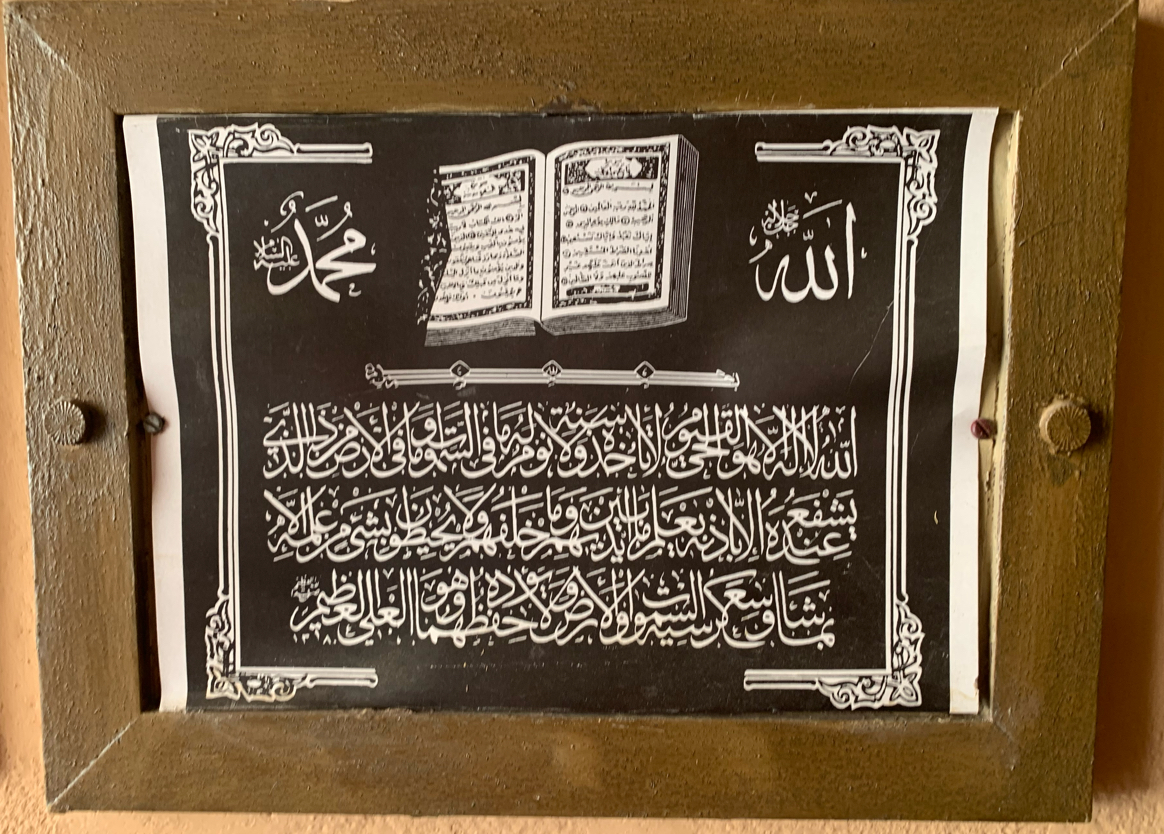
|
136324
|
Laura_Pizarro_Jacinto
|
Spain
Cáceres
|
|
|
Inscription:
At the top right: الله (Allah = God).
At the top left: محمد (Muhammad = Prophet Muhammad).
In the center: an open Qur’an, symbolizing divine revelation.
The main text below is written in Arabic script, in a traditional style used for Qur’anic verses and Islamic invocations, Ayat al-Kursi (The Throne Verse), Qur’an 2:255, one of the most important verses in Islam. Displaying Ayat al-Kursi there highlights the importance of Islamic spirituality and calligraphy in daily life during Al-Andalus.
Transcription (Arabic script):
اللَّهُ لَا إِلَٰهَ إِلَّا هُوَ الْحَيُّ الْقَيُّومُ
لَا تَأْخُذُهُ سِنَةٌ وَلَا نَوْمٌ
لَهُ مَا فِي السَّمَاوَاتِ وَمَا فِي الْأَرْضِ
مَنْ ذَا الَّذِي يَشْفَعُ عِندَهُ إِلَّا بِإِذْنِهِ
يَعْلَمُ مَا بَيْنَ أَيْدِيهِمْ وَمَا خَلْفَهُمْ
وَلَا يُحِيطُونَ بِشَيْءٍ مِّنْ عِلْمِهِ إِلَّا بِمَا شَاءَ
وَسِعَ كُرْسِيُّهُ السَّمَاوَاتِ وَالْأَرْضَ
وَلَا يَئُودُهُ حِفْظُهُمَا
وَهُوَ الْعَلِيُّ الْعَظِيمُ
Translation (English):
"Allah! There is no deity except Him, the Ever-Living, the Sustainer of all existence.
Neither drowsiness overtakes Him nor sleep.
To Him belongs whatever is in the heavens and whatever is on the earth.
Who is it that can intercede with Him except by His permission?
He knows what is before them and what will be after them,
and they encompass not a thing of His knowledge except for what He wills.
His Kursi extends over the heavens and the earth,
and their preservation tires Him not.
And He is the Most High, the Most Great."
This type of decorative calligraphy is often placed in Muslim homes, mosques, or shops for protection and blessing, as Ayat al-Kursi is believed to safeguard against harm.
Thisis the Ayat al-Kursi (The Throne Verse, Qur’an 2:255) displayed in the Museo Casa Árabe in Cáceres. The Museo Casa Árabe is located in the Judería Vieja, very close to the Ermita de San Antonio, and it showcases the Islamic heritage of Cáceres.
Cáceres was a Muslim stronghold (711–1229), marked by its walls, fortress, and Islamic water systems. After the Christian conquest, it became home to both Jews and Christians, creating the multi-religious city we can still trace today, and many architectural features, inscriptions, and traditions remain.
|
PALRA
|
|

|
136323
|
Laura_Pizarro_Jacinto
|
Spain
Cáceres
|
|
|
Islamic geometric tilework (azulejo mudéjar)
|
PALRA
|
|
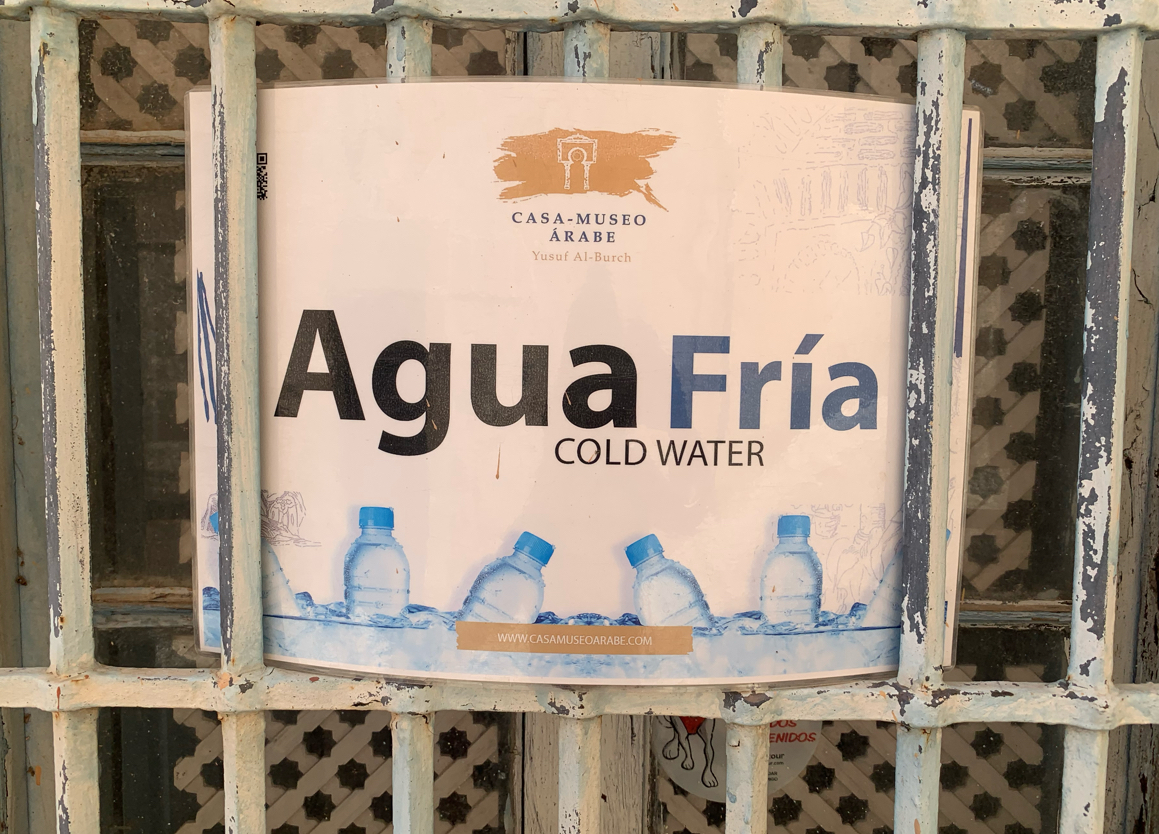
|
136322
|
Laura_Pizarro_Jacinto
|
Spain
Cáceres
|
|
|
—
|
PALRA
|
|
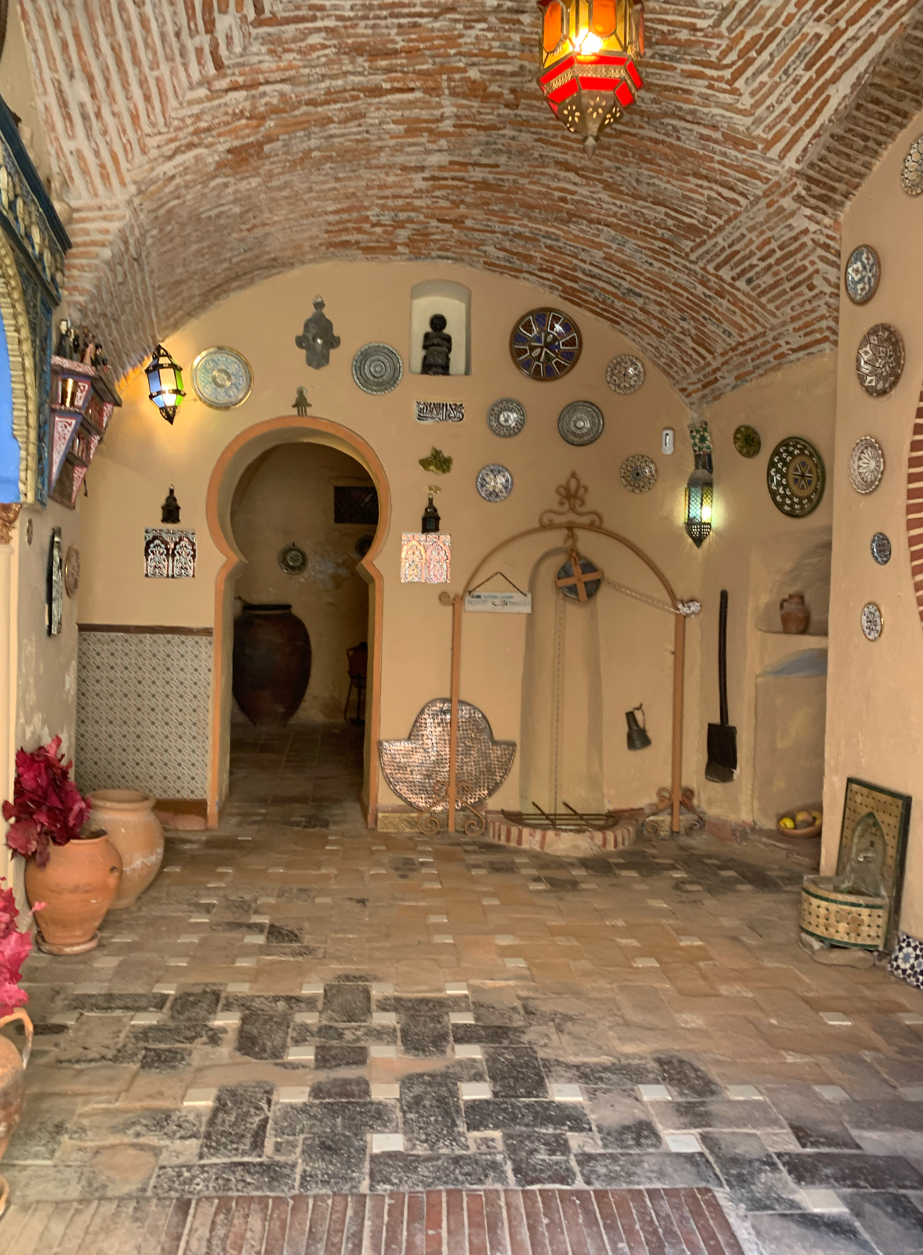
|
136321
|
Laura_Pizarro_Jacinto
|
Spain
Cáceres
|
|
|
This is a photo from inside the Casa Museo Árabe in Cáceres, and it beautifully recreates the atmosphere of a domestic Andalusí-Mudéjar home.
Horseshoe arch: The iconic Islamic architectural form, typical of Al-Andalus, especially from the 10th–12th centuries.
Brick vaulted ceiling: Practical for cooling and a hallmark of Mudéjar construction.
Ceramic plates on the wall: Decorative and functional, echoing Nasrid and Mudéjar traditions.
Metal objects and scale: Everyday domestic tools, showing how a family would have lived.
Lamps: Hanging lanterns in colored glass, inspired by Islamic designs.
Tiles (azulejos): Geometric patterns reflecting Islamic aesthetics of symmetry and infinity.
Earthen jars (tinajas): Used to store water, oil, or grains, very typical of both Muslim and later Christian homes in Extremadura.
The Casa Museo Árabe is located in the Judería Vieja, where Muslims, Jews, and later conversos lived after the Christian Reconquest (13th–15th centuries). The house is a reconstruction, but it is based on archaeological and historical evidence of how homes in Islamic Cáceres would have looked. It represents the daily life of Mudéjar families (Muslims living under Christian rule) before the eventual expulsion.
|
PALRA
|
|

|
136320
|
Laura_Pizarro_Jacinto
|
Spain
Cáceres
|
|
|
—
|
PALRA
|
|
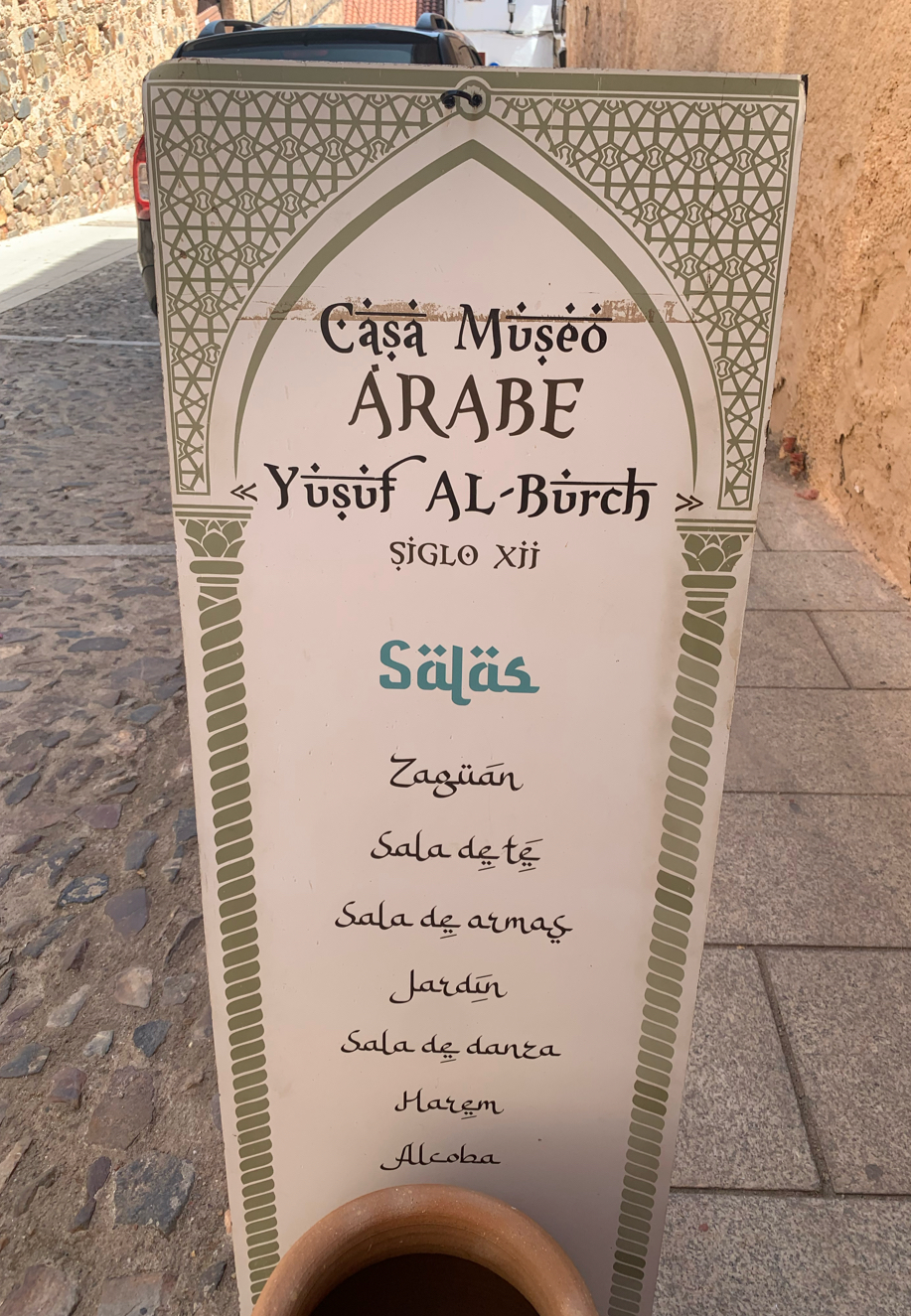
|
136319
|
Laura_Pizarro_Jacinto
|
Spain
Cáceres
|
|
|
The languages in this sign are Spanish and Arabic (transliterated into Latin letters).
"Casa Museo Árabe": Spanish, meaning Arab House Museum.
"Yusuf Al-Burch": An Arabic name, written in Latin script.
"Siglo XII": Spanish, meaning 12th century.
"Sālās": Looks like an Arabic word transliterated, probably meaning halls/rooms.
Then the list is in Spanish:
Zaguán: entrance hall.
Sala de té: tea room.
Sala de armas: armory.
Jardín: garden.
Sala de danza: dance hall.
Harem: harem (women’s quarters).
Alcoba: bedroom.
So this is a Spanish museum sign with Arabic influence, reflecting the mixture of cultures in Cáceres.
|
PALRA
|
|
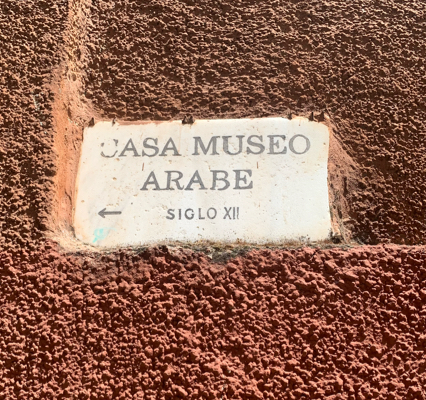
|
136318
|
Laura_Pizarro_Jacinto
|
Spain
Cáceres
|
|
|
—
|
PALRA
|
|
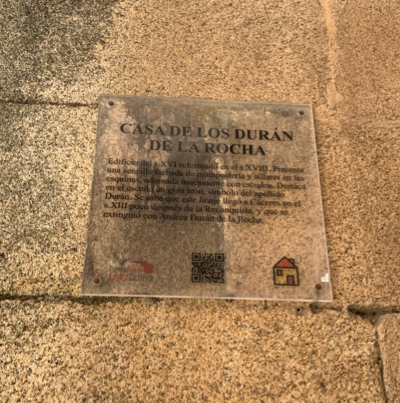
|
136317
|
Laura_Pizarro_Jacinto
|
Spain
Cáceres
|
|
|
—
|
PALRA
|
|

|
136316
|
Laura_Pizarro_Jacinto
|
Spain
Cáceres
|
|
|
This is a house number tile in Cáceres, showing the number 5.
|
PALRA
|
|
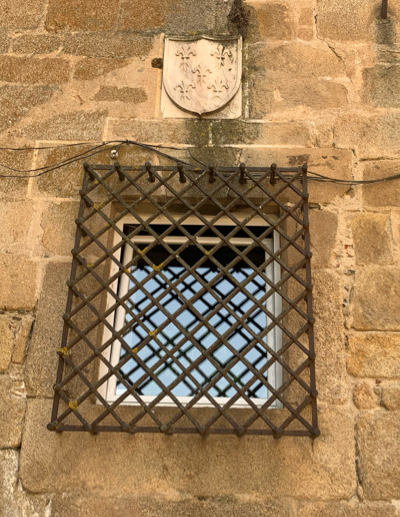
|
136315
|
Laura_Pizarro_Jacinto
|
Spain
Cáceres
|
|
|
—
|
PALRA
|
|

|
136314
|
Laura_Pizarro_Jacinto
|
Spain
Cáceres
|
|
|
—
|
PALRA
|
|
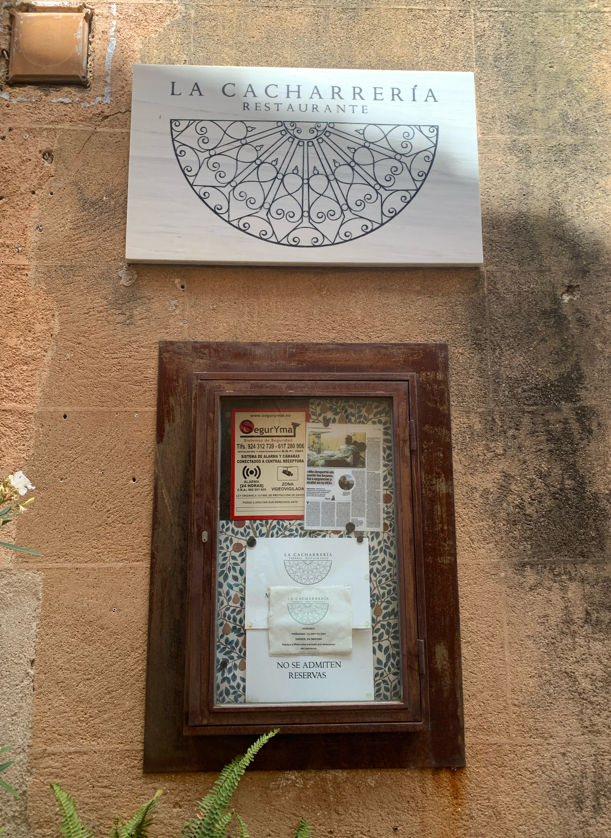
|
136313
|
Laura_Pizarro_Jacinto
|
Spain
Cáceres
|
|
|
—
|
PALRA
|
|
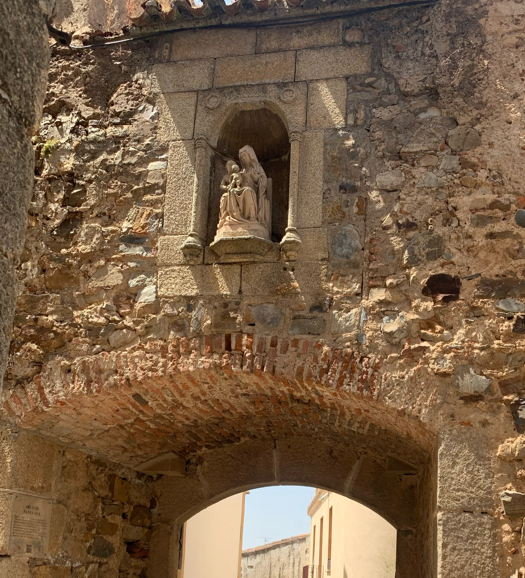
|
136312
|
Laura_Pizarro_Jacinto
|
Spain
Cáceres
|
|
|
It is the oldest gate of the Cáceres wall, dating back to the 3rd century, built by the Romans. It’s the only city gate that still preserves Roman masonry blocks in its structure. In the Middle Ages, it became known as Puerta del Río because it led towards the river. Later, a small chapel with an image of the Virgin and Child (which you see in the photo) was placed above the arch, giving it its popular name: Arco del Cristo.
It was one of the main entrances used by medieval inhabitants. Its survival makes it a key testimony to the Roman origins of Cáceres’ walls.
|
PALRA
|
|
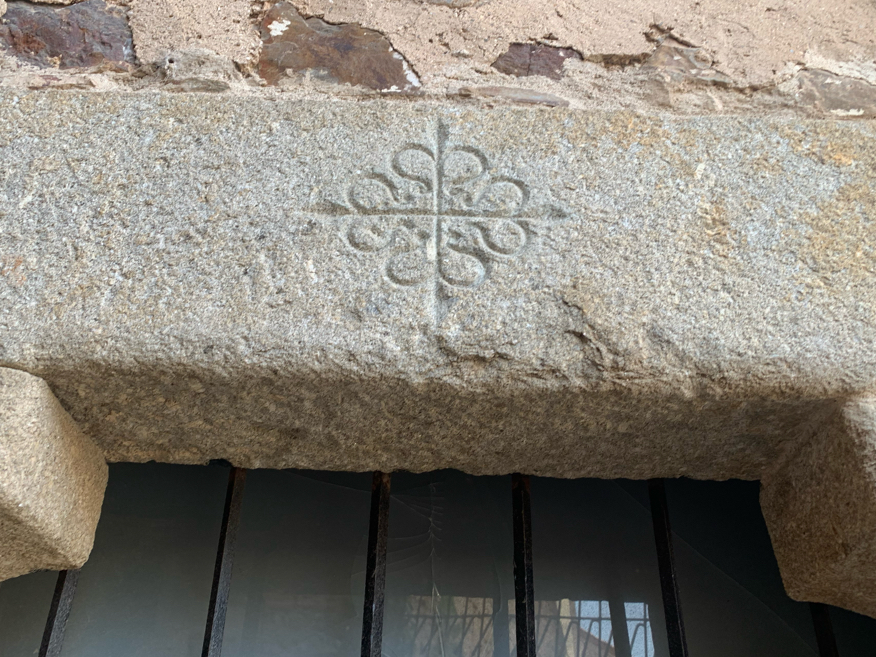
|
136311
|
Laura_Pizarro_Jacinto
|
Spain
Cáceres
|
|
|
It represents the Cruz de la Orden de Santiago (Cross of the Order of Santiago), a military and religious order founded in the 12th century in Spain. The cross is easily recognized by its cross-shaped design with fleur-de-lis (flower-like) ends, symbolizing honor and service.
In Cáceres, which was an important stronghold of the Order of Santiago, these marks often appear on stones, churches, and houses to indicate protection, ownership, or devotion to the order.
|
PALRA
|
|
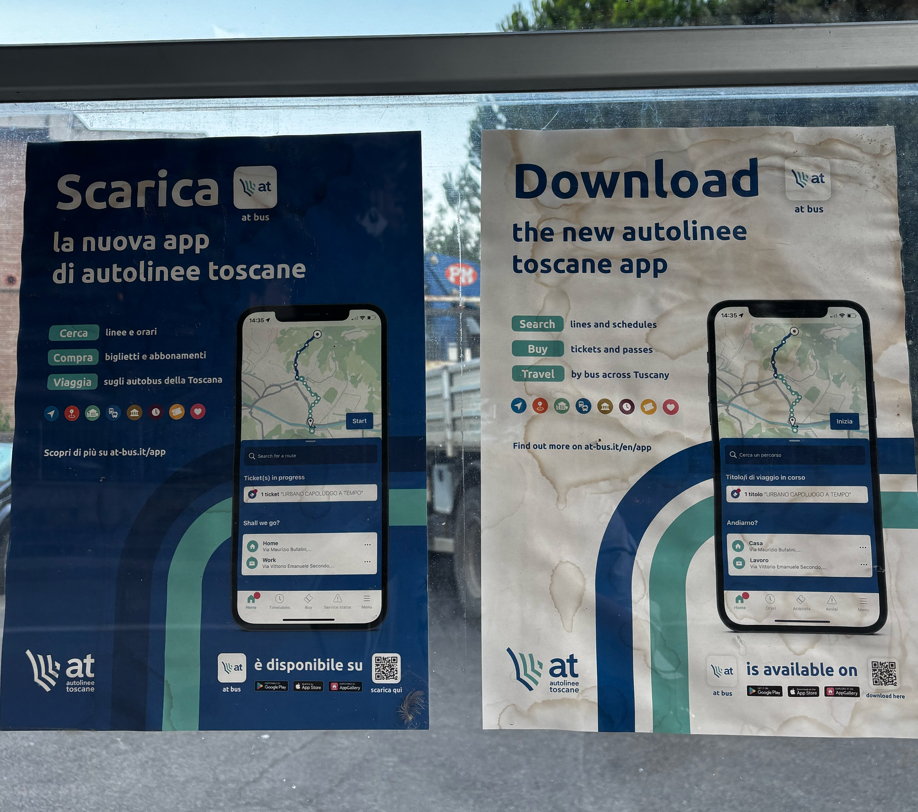
|
136310
|
matricola 13829
|
Italia
Siena
|
|
|
Teoria e tecnica della traduzione: matricola 13829
|
|
|
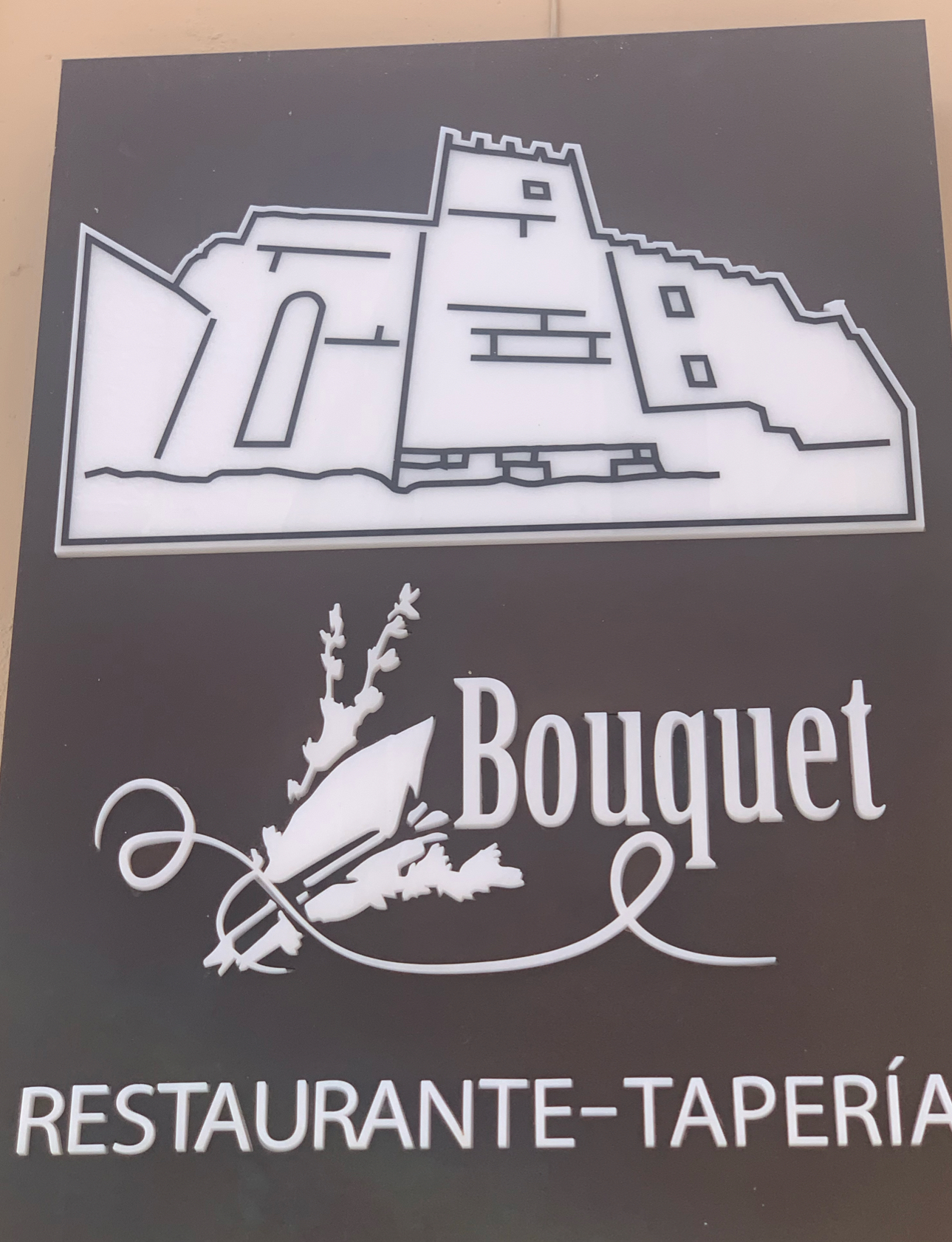
|
136309
|
Laura_Pizarro_Jacinto
|
Spain
Cáceres
|
|
|
The language on the sign is Spanish. With a French loanword used as the restaurant’s name.
"Restaurante-Tapería" means Restaurant and Tapas Bar.
The word "Bouquet" is French, but here it is used as a brand name in Spanish context, often to evoke refinement (as in wine bouquet).
|
PALRA
|
|

|
136308
|
Laura_Pizarro_Jacinto
|
Spain
Cáceres
|
|
|
This is a ceramic street plaque in Cáceres, located at the Plazuela de Publio Hurtado (a small square inside the old town).
Language: Spanish.
Style: Hand-painted azulejos (ceramic tiles), a tradition with deep roots in Andalusí (Moorish) and later Renaissance Spain.
Decorative elements: The framing uses Renaissance-inspired motifs: cherubs/nude figures in blue and white, surrounded by vegetal scrolls in blue and ochre tones. This kind of decoration became common in the 19th and early 20th centuries when cities renewed their signage with ceramic plaques.
Function: It’s not medieval but part of Cáceres’ heritage preservation efforts to beautify the historic center with artisanal signage that blends well with the monumental setting.
|
PALRA
|
|
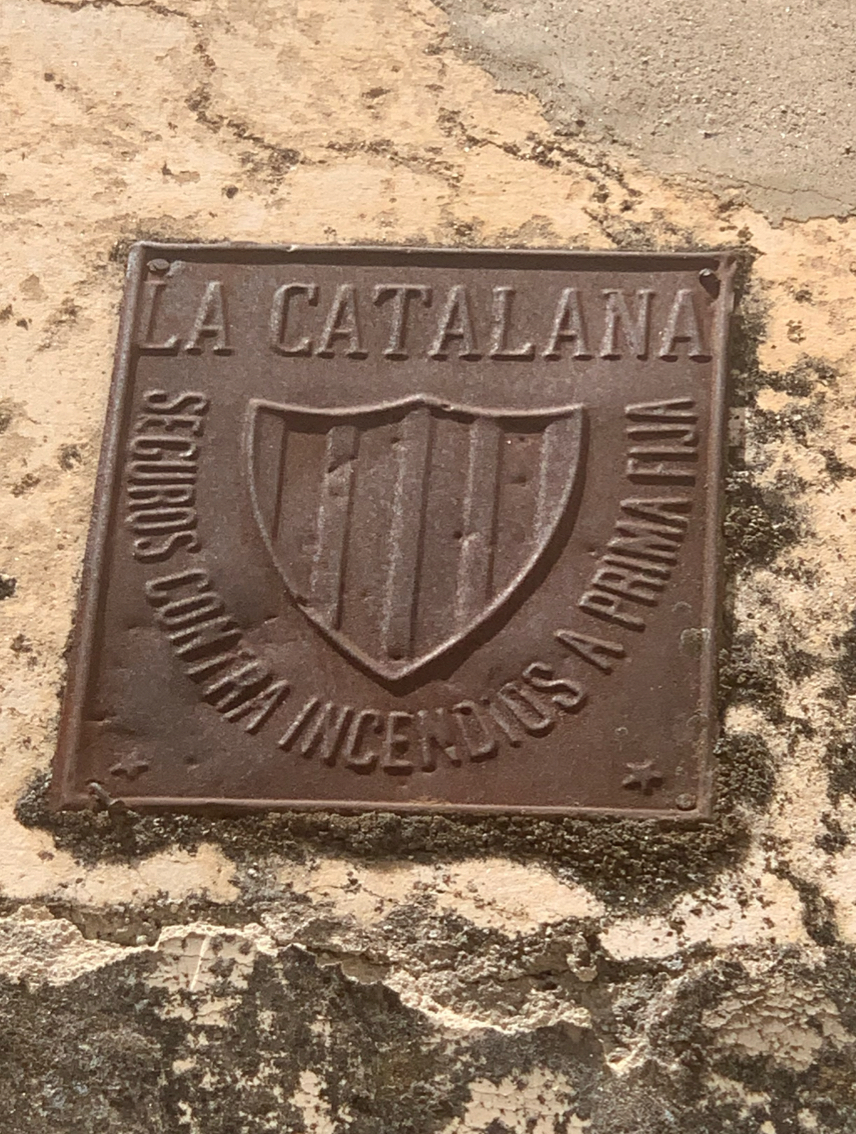
|
136307
|
Laura_Pizarro_Jacinto
|
Spain
Cáceres
|
|
|
Text:
“LA CATALANA” (the name of the company).
“SEGUROS CONTRA INCENDIOS A PRIMA FIJA” (insurance against fires with a fixed premium).
Symbol: A shield with vertical stripes, evoking the Catalan coat of arms (the Senyera of Catalonia).
In the 19th and early 20th centuries, Spanish insurance companies used to place these metal plaques on the façades of buildings they insured, especially against fire. This practice was common all over Europe. These plaques served both as advertising and as a mark of protection: fire brigades often prioritized extinguishing fires in buildings insured by their company.
|
PALRA
|
|
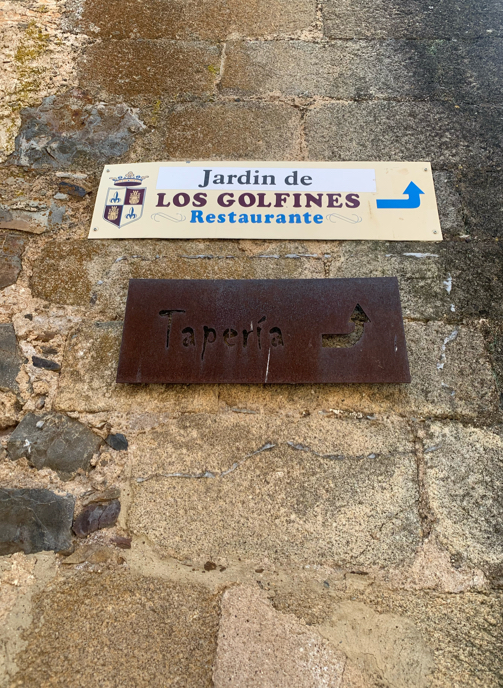
|
136306
|
Laura_Pizarro_Jacinto
|
Spain
Cáceres
|
|
|
—
|
PALRA
|
|